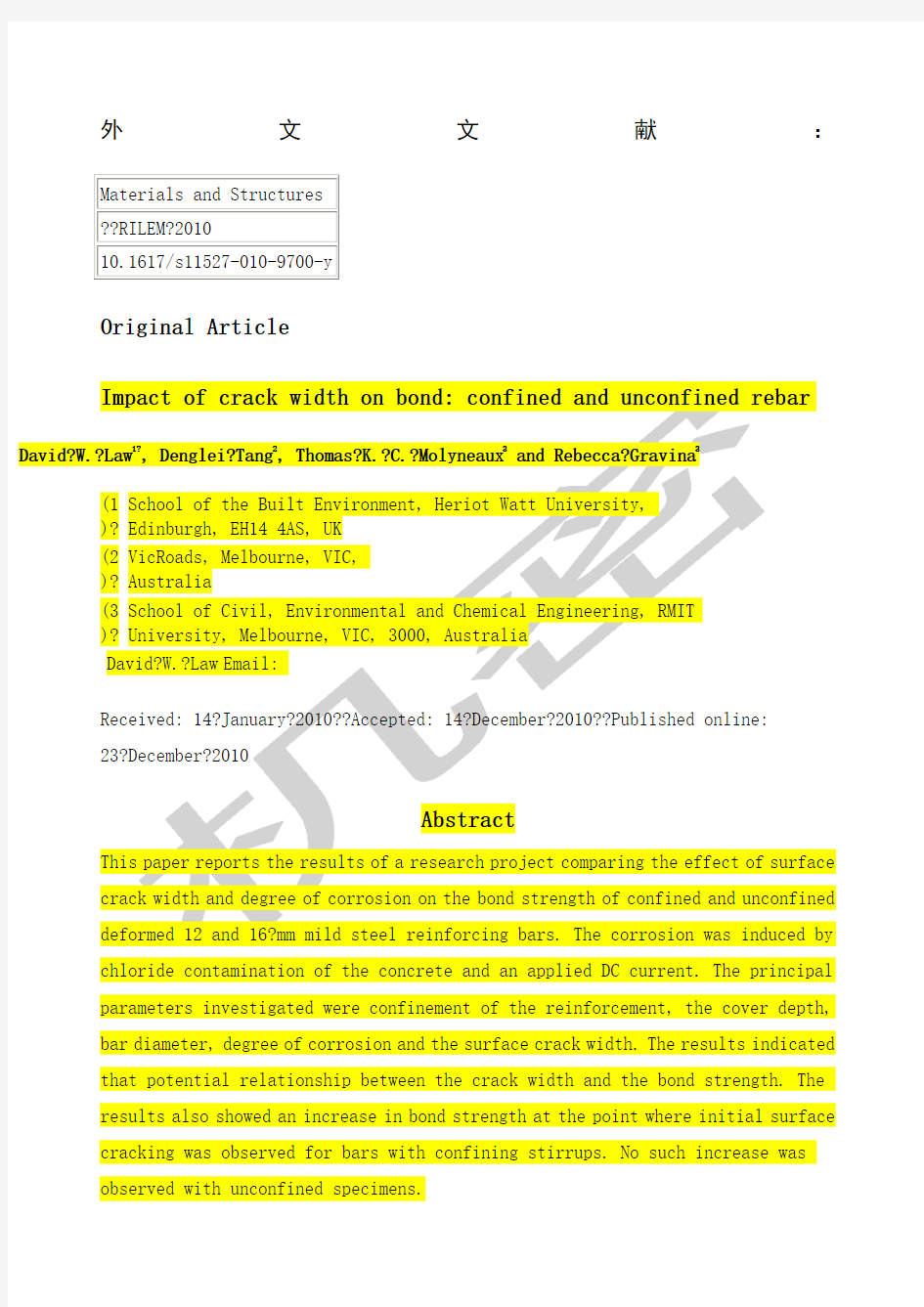
土木工程外文文献及翻译
- 格式:docx
- 大小:42.75 KB
- 文档页数:19


外文文献:
Original Article
chloride contamination of the concrete and an applied DC current. The principal parameters investigated were confinement of the reinforcement, the cover depth, bar diameter, degree of corrosion and the surface crack width. The results indicated that potential relationship between the crack width and the bond strength. The results also showed an increase in bond strength at the point where initial surface cracking was observed for bars with confining stirrups. No such increase was observed with unconfined specimens.
Keywords:??bond?;corrosion?;?rebar?;?cover?;?crack width?;?concrete
1 ? Introduction
The corrosion of steel reinforcement is a major cause of the deterioration of reinforced concrete structures throughout the world. In uncorroded structures the bond between the steel reinforcement and the concrete ensures that reinforced concrete acts in a composite manner. However, when corrosion of the steel occurs this composite performance is adversely affected. This is due to the formation of
can
bearing
and
–5, 7,
19, 24, 29]. The majority of this research has focused on the relationship between the level of corrosion (mass loss of steel) or the current density degree (corrosion current applied in accelerated testing) and crack width, or on the relationship between bond strength and level of corrosion. Other research has investigated the mechanical behaviour of corroded steel [1, 11] and the friction characteristics [13]. However, little research has focused on the relationship between crack width
and bond [23, 26, 28], a parameter that can be measured with relative ease on actual structures.
The corrosion of the reinforcing steel results in the formation of iron oxides which occupy a larger volume than that of the parent metal. This expansion creates tensile stresses within the surrounding concrete, eventually leading to cracking of the cover concrete. Once cracking occurs there is a loss of confining force from the concrete. This suggests that the loss of bond capacity could be related to the
tested.
spaced from the plastic tube, at 75?mm centres.
This represents four groups of specimens with a combination of different bar diameter and with/without confinement. The specimens were selected in order to investigate the influence of bar size, confinement and crack width on bond strength.
2.2 ? Materials
The mix design is shown, Table?1. The cement was Type I Portland cement, the aggregate was basalt with specific gravity 2.99. The coarse and fine aggregate were